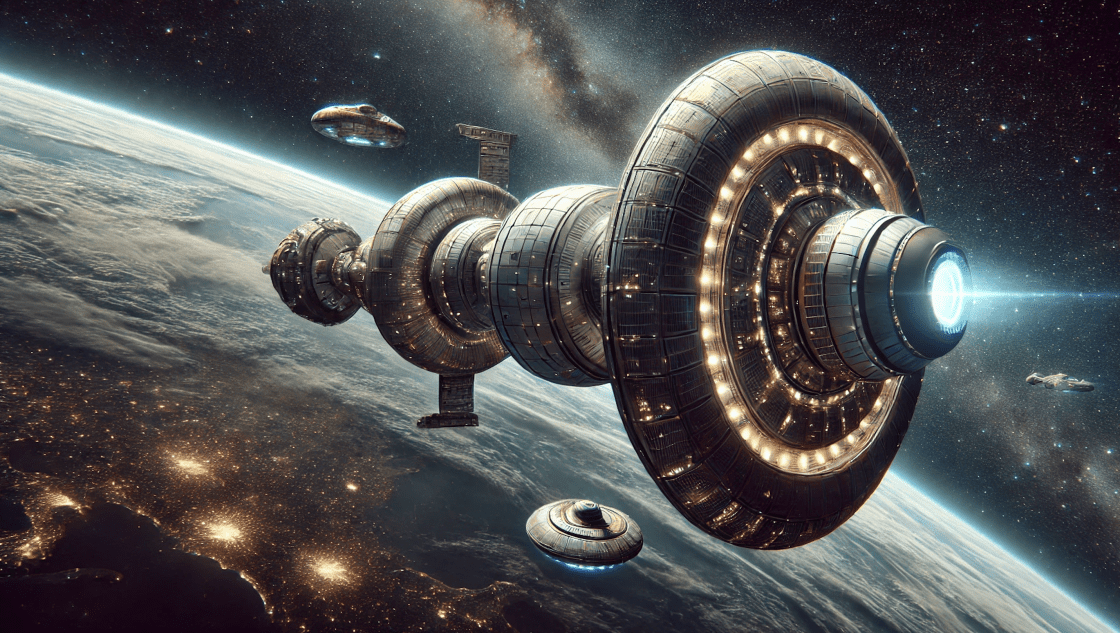The ambition to travel among the stars is one of humanity’s most enduring dreams. While science fiction has long imagined starships exploring distant galaxies, the reality of interstellar travel remains one of the greatest challenges of our time. Project Hyperion, through its groundbreaking design contest, is pushing the boundaries of this vision by challenging participants to create a generation spaceship capable of sustaining human life for 250 years on a deep-space journey.
This contest doesn’t just focus on the technical aspects of propulsion or engineering. Instead, it asks competitors to design the architecture, ecosystem, and societal structures needed for a multi-generational mission. It’s a call to reimagine how humanity might thrive on a spacecraft that will journey for centuries, with the destination reached only by the descendants of the original crew.
What is a Generational Spaceship
A generational spaceship is more than just a vessel—it’s a self-sustaining world designed to sustain life across multiple generations. Such a ship must balance ecological sustainability, technological reliability, and societal cohesion to succeed. The Project Hyperion Design Contest focuses on crafting a habitat where up to 1,000 people can live, work, and evolve over 250 years, maintaining Earth-like conditions while being completely independent from external resources.
Key challenges include:
- Designing a self-contained ecosystem capable of recycling air, water, and organic matter indefinitely.
- Ensuring Earth-equivalent gravity through rotation, protecting inhabitants from the detrimental effects of microgravity.
- Creating an adaptable society that can endure changes over generations, preserving culture, knowledge, and governance.
The Design Challenge
The Project Hyperion Design Contest is divided into two phases, encouraging participants to blend creativity with feasibility in their proposals. Teams must consist of at least an architectural designer, an engineer, and a social scientist to ensure interdisciplinary solutions.
Phase 1: Conceptual Design
Participants will submit initial concepts that outline:
- Habitat layout and architectural design.
- Societal frameworks for governance, education, and conflict resolution.
- Life-support systems and ecological strategies.
- 3D renderings, diagrams, and a narrative explaining the design choices.
Phase 2: Detailed Design
Shortlisted teams will move on to refine their ideas, presenting:
- Comprehensive blueprints and detailed architectural designs.
- Technical specifications for life-support, radiation shielding, and waste recycling.
- Strategies for population management, cultural evolution, and knowledge preservation.
Constraints for the Generational Spaceship
The design must meet specific requirements to ensure the feasibility of a 250-year mission:
- Duration: The ship must operate autonomously for 250 years without external support.
- Population: Accommodate 1,000 ± 500 people, ensuring genetic diversity and societal stability.
- Artificial Gravity: Achieve Earth-like gravity through rotational systems.
- Environmental Conditions: Maintain an Earth-like atmosphere, shielding inhabitants from cosmic radiation and micrometeoroids.
- Ecological Sustainability: Create closed-loop ecosystems to recycle resources indefinitely.
- Social Systems: Establish adaptable governance and educational frameworks to preserve stability and prevent societal decline.
Key Design Considerations
Architectural Design
The habitat must balance form and function, ensuring comfort, adaptability, and longevity:
- Flexible Living Spaces: Modular designs that evolve over generations to meet changing needs.
- Biophilic Elements: Incorporating greenery, water features, and artificial sunlight to mimic Earth’s natural environment.
- Privacy and Intimacy: Solutions for maintaining personal space and fostering relationships within a confined habitat.
Ecological Systems
Life on the spaceship depends on sustainable ecological systems:
- Closed-Loop Recycling: Advanced technologies for air, water, and waste management.
- Biodiversity: Carefully selected plants, animals, and microbes to create a stable ecosystem.
- Food Production: Hydroponic and aquaponic systems to ensure diverse and reliable food sources.
Societal Framework
Societal systems must ensure harmony and continuity over centuries:
- Governance Models: Adaptive structures that balance authority with community needs.
- Knowledge Transfer: Education systems to prevent the loss of skills and cultural heritage.
- Conflict Resolution: Mechanisms to address disputes and prevent unethical behavior.
Psychological and Cultural Considerations
Maintaining mental health and cultural identity is crucial for long-term missions:
- Earth-Like Environments: Simulated natural spaces for recreation and relaxation.
- Cultural Preservation: Archives of human history, art, and philosophy to inspire future generations.
- Community Engagement: Activities and traditions that foster a sense of belonging and purpose.
Technological Challenges
Radiation Protection
The vastness of space exposes travelers to high levels of cosmic radiation. Designers must incorporate:
- Physical Shields: Layers of water or hydrogen-rich materials to absorb radiation.
- Magnetic Fields: Systems to deflect charged particles, mimicking Earth’s magnetosphere.
Artificial Gravity
Prolonged exposure to microgravity can harm human health. Solutions include:
- Rotational Habitats: Spinning sections of the ship to simulate gravity through centrifugal force.
- Gravity Zones: Combining Earth-like and reduced-gravity areas for diverse uses.
Energy and Reliability
The ship must operate for centuries without resupply:
- Energy Sources: Fusion reactors, solar arrays, or other sustainable options.
- System Redundancy: Overlapping systems to ensure continuous operation despite failures.
Evaluative Criteria
Submissions will be judged on three main aspects:
- Architectural Design: How well the habitat integrates functionality, aesthetics, and adaptability.
- Technical Feasibility: Reliability and efficiency of life-support, energy, and protection systems.
- Societal Innovation: Robustness of governance, education, and cultural frameworks over generations.
Participation and Prizes
The competition is open to individuals and teams worldwide. Registration costs $20, making it accessible to a diverse range of participants.
Timeline
- Registration Deadline: December 15, 2024
- Phase 1 Submission: February 2, 2025
- Phase 2 Submission: May 4, 2025
- Winners Announced: June 2, 2025
Prizes
- 1st Place: $5,000
- 2nd Place: $3,000
- 3rd Place: $2,000
- Honorable Mentions: Up to 10 additional recognitions.
The Vision of Project Hyperion
Project Hyperion’s ultimate goal is to inspire humanity to think beyond Earth, exploring how we might thrive as an interstellar species. By focusing on architectural, ecological, and societal systems, the competition highlights the complexity and creativity required to make long-duration space travel possible.
This is more than a design contest—it’s an opportunity to shape the future of humanity among the stars. If you’ve ever dreamed of contributing to the next great leap in human exploration, Project Hyperion is your chance to be part of that journey. Ad Astra!


